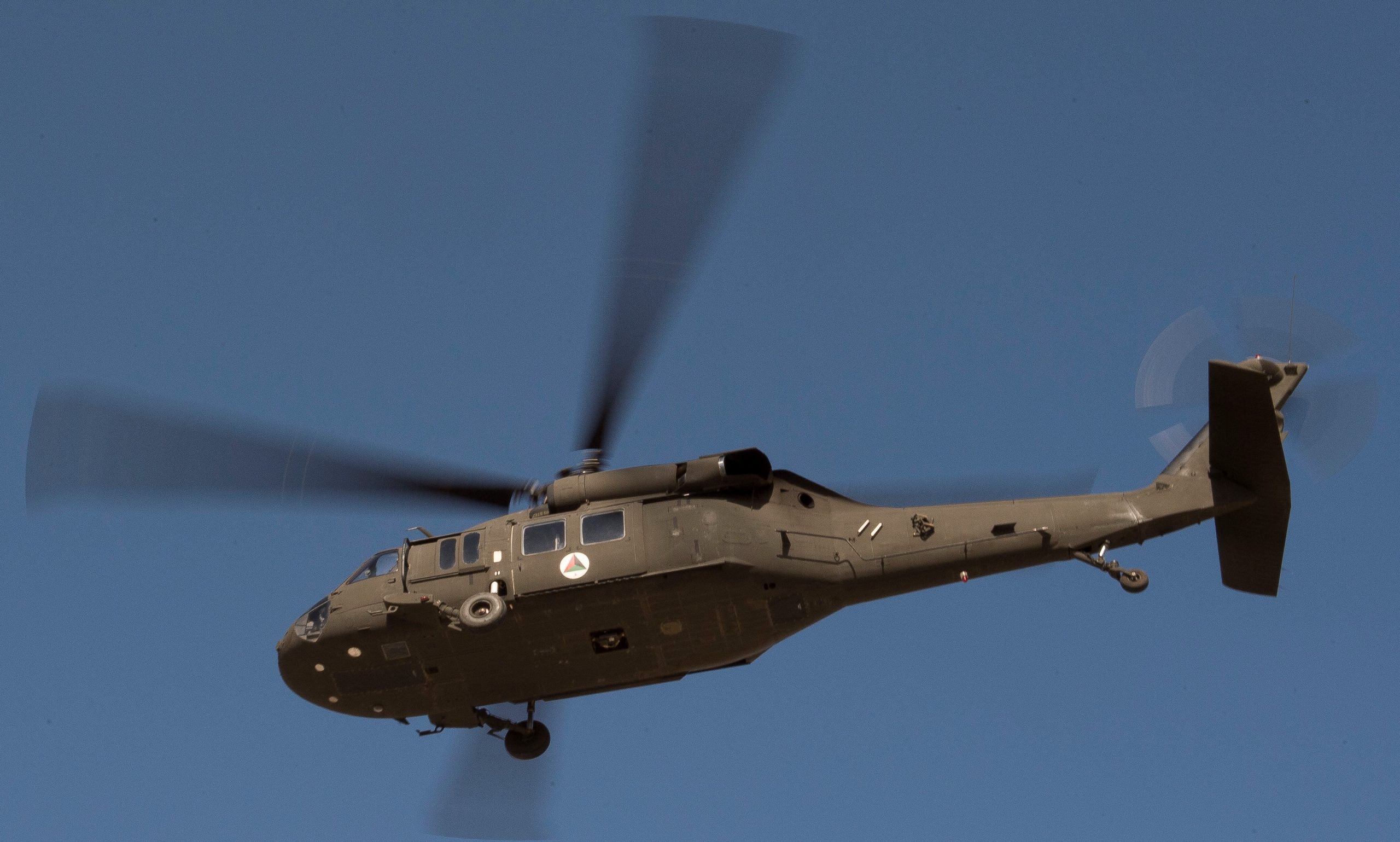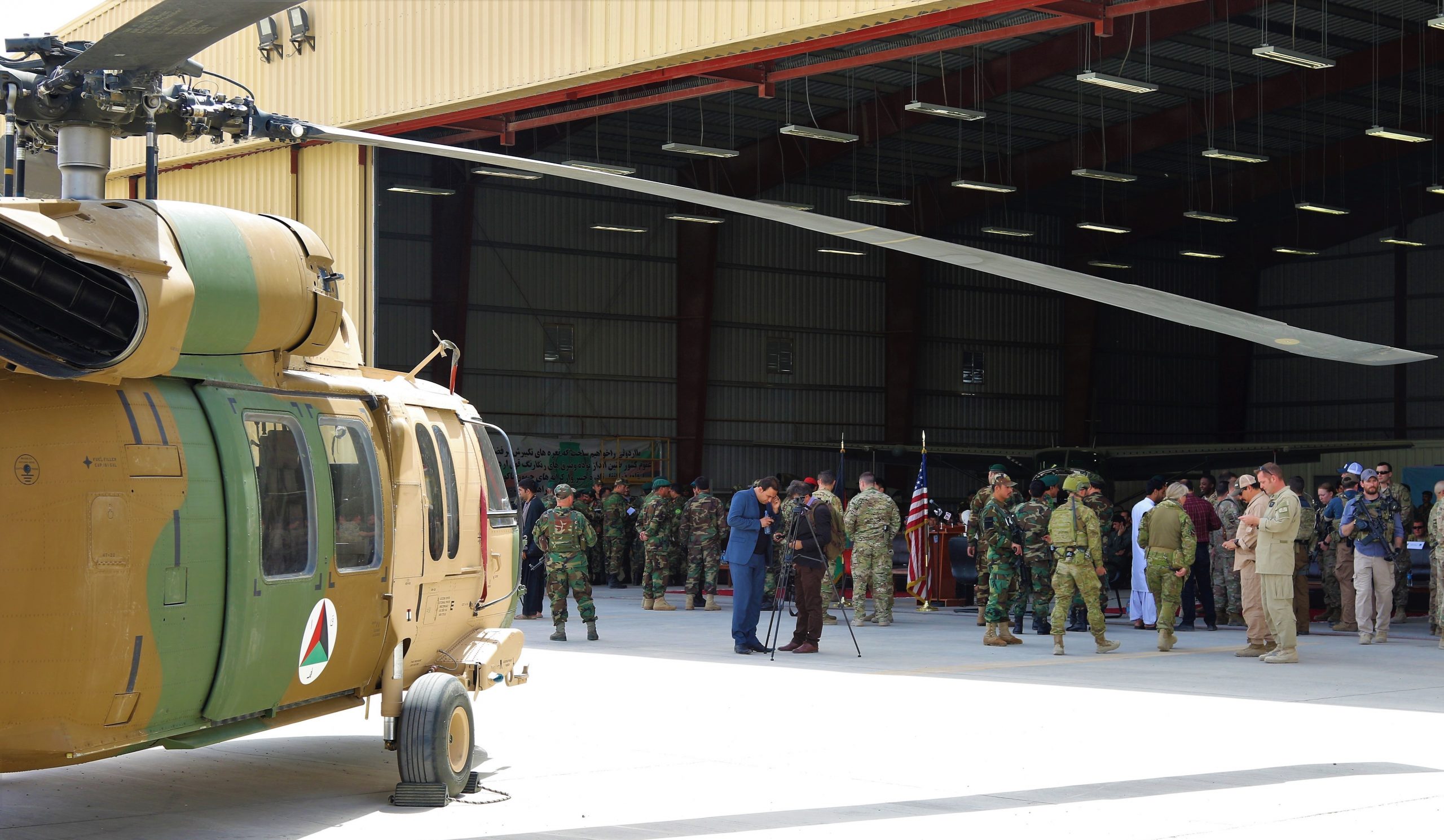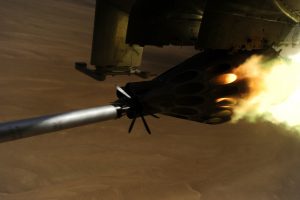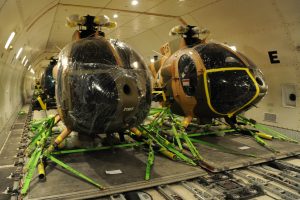31 October 2020 / 03:21 (UTC-07 Tango 06)/ 10
Aban 1399/14 Rabi ‘al-Awwal 1442/15 Bing-Xu(9th month) 4718
Begun under the Barack Obama administration, the UH-60A program for Afghanistan is now drastically scaled back under the Donald Trump administration, due to lack of the Black Hawk’s performance in Afghanistan, a shift in priorities within the U.S. Department of Defense, and the high cost to U.S. taxpayers.
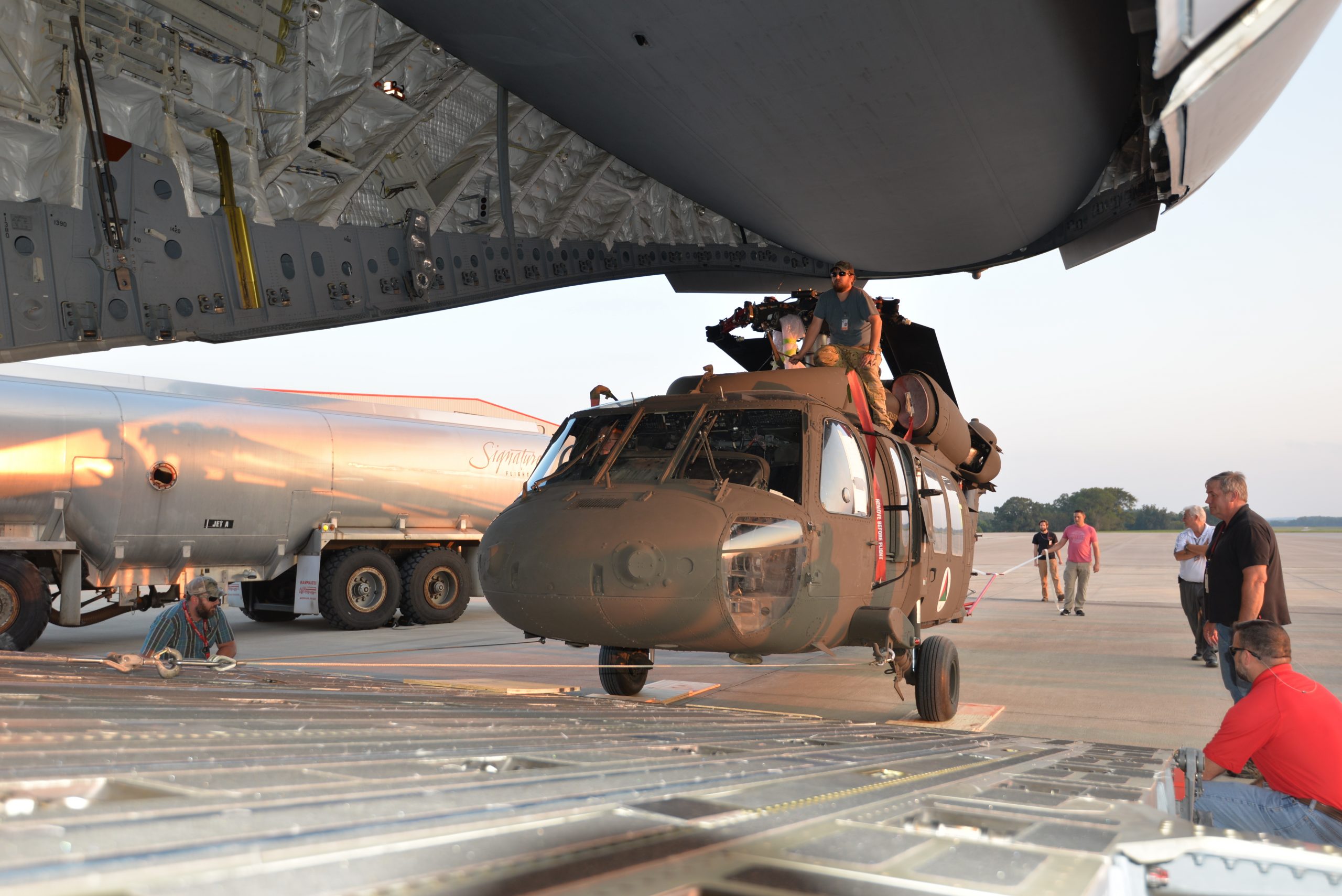
A former U.S. Army Black Hawk is loaded onto a C-17 transport, bound for Afghanistan. U.S. Army photo by Adriane Elliot, 15SEP2017.
September 2017, the first batch of UH-60As for Afghanistan are unloaded from a C-17 Globemaster-3, at Kandahar Air Field.


Photo by Staff Sergeant Trevor McBride.

Video by Senior Airmen Ryan Green, UH-60A flight training, November 2017:
By December 2017, a small group of six Afghan Mil 17 pilots became qualified to fly the UH-60A+.

Photo by Staff Sergeant Jared Duhon.
By February 2018, the Afghan Air Force had eight UH-60 Blackhawks.


By March 2018, U.S. military officials were boasting the UH-60 program was “mission ready”. Video of more flight training by John Roberts:
By May 2018, the first large class of Afghan UH-60A crews had completed the Mission Qualification Course (MQC). Video by Jackie Faye showing Afghan UH-60s taking off on their first official mission one day after the MQC graduation:
In June 2018, The U.S. Special Inspector General For Afghanistan Reconstruction (SIGAR) criticized the UH-60 program for Afghanistan saying “They are unable to accommodate some of the larger cargo items the Mi-17s can carry, and in general, it takes almost two Black Hawks to carry the load of a single Mi-17. Furthermore, unlike Mi-17s, Black Hawks cannot fly at high elevations and, as such, cannot operate in remote regions of Afghanistan where Mi-17s operate.”
A Train, Advise and Assist Command-Air (TAAC-Air) explainer video by Staff Sergeant Rion Ehrman, with overly dramatic music, July 2018:

Photo by Sergeant Luke Hoogendam.
July 2018 MedEvac (medical evacuation) training, now known as CasEvac (casualty evacuation).

Photo by Staff Sergeant Clayton Cupit.
By December 2018, U.S. TAAC-Air contractors continued to train Afghan personnel on the UH-60A.


In February 2019, SIGAR warned that the $7-billion U.S. taxpayer funded program to replace Afghanistan’s Russian built helicopters with U.S. made helicopters (first proposed in 2014, mainly using the UH-60A+) was flawed because “DOD does not currently have a maintenance training course in place to train Afghan personnel to maintain UH-60s. Having insufficient Afghan maintenance personnel limits the locations at which UH-60s can operate because DOD policy bars U.S. contractors from working where there is no U.S. or Coalition control due to security concerns.”
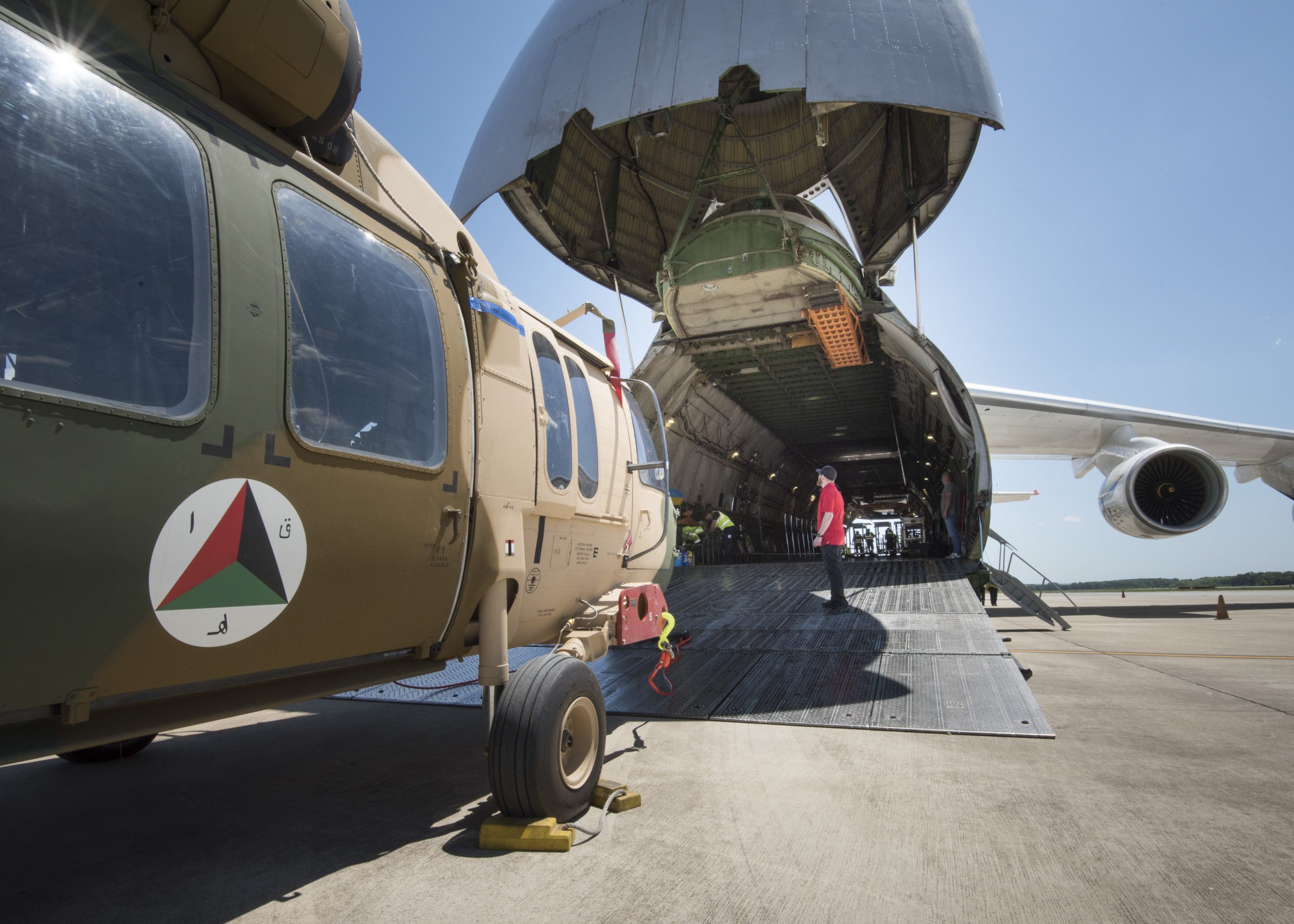
Another former USA UH-60 Black Hawk bound for Afghanistan, this time on 25APR2019, transported by Ukrainian An-124 transport. USA photo by Richard Bumgardner.

In January 2020, the Military Times reported “The U.S. military is reducing the number of UH-60 Black Hawks it plans to provide Afghan forces from 159 to just 53…..”, ostensibly because the U.S. Department of Defense no longer considers Afghanistan a priority.
September 2020, the Financial Express explains the reasons why ‘Afghan Military to stick to Russian-made Helocraft’, saying the Obama era program to rely mainly on UH-60s to replace proven Russian technology was “primarily driven by political concern”.
Don’t worry all you happy U.S. taxpayers, you paid for those Russian made ‘Hip’ helicopters as well, to the tune of $15-million each!
Zombie ‘Copter: 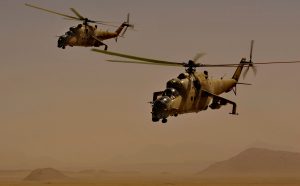 HOW THE HIND RETURNED TO AFGHANISTAN (with the help of U.S./NATO), AND WHY IT WON’T DIE
HOW THE HIND RETURNED TO AFGHANISTAN (with the help of U.S./NATO), AND WHY IT WON’T DIE
Afghanistan: 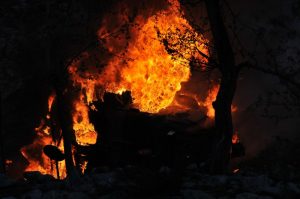 MIL 17 CRASH & BURN
MIL 17 CRASH & BURN

